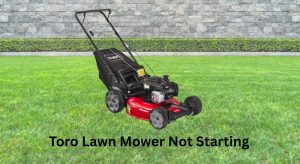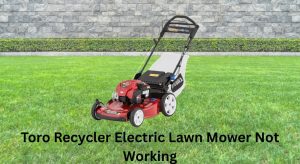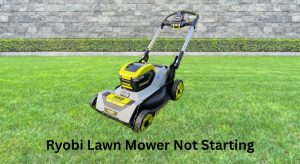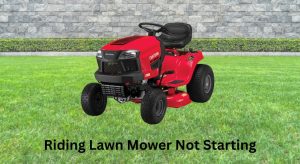When your lawn mower won’t engage the blades or move forward, it’s frustrating—especially if you’re staring down a weekend of overgrown grass. The good news: most “lawn mower not engaging” issues are caused by simple problems like a loose belt, a disengaged safety switch, or a stretched cable. Quick fix: check that the deck/blade engagement lever or PTO switch is in the ON position, the safety handle is fully squeezed (on push mowers), and the drive/blade belt is intact and on the pulleys.
In this guide, you’ll learn the most common causes for mowers not engaging (both walk-behind and riding mowers), step-by-step fixes from fastest to more advanced, preventative maintenance tips, and when to call a pro. By the end, you’ll be able to confidently diagnose and restore blade engagement and self-propel/drive in most brands, including Honda, Toro, Husqvarna, Craftsman, John Deere, Cub Cadet, Troy-Bilt, and others.
Common Causes of a Lawn Mower Not Engaging

Safety Interlock Not Satisfied
Most mowers have safety systems that prevent blade or drive engagement if conditions aren’t met (e.g., operator presence control bar not held, seat switch open on riders, parking brake not set).
Disengaged or Stretched Control Cable
The blade or self-propel system is controlled by a cable that can stretch, seize, or detach, making engagement impossible.
Broken, Slipped, or Worn Belt
On both walk-behind self-propel and riding mowers, belts transmit power. A loose or broken belt means no blade or drive.
Faulty PTO Switch or Clutch (Riding Mowers)
Electric PTO clutches and switches can fail, preventing blade engagement even with the engine running.
Idler Pulley/Brake Arm Issues
Frozen idlers, weak springs, or stuck brake arms stop belts from tensioning properly.
Sheared Key or Spindle/Transmission Failure
Less common, but damaged blade adapter keys (push mowers) or hydrostatic transaxle faults (riders) can prevent engagement.
Debris or Jammed Deck
Built-up grass, twigs, or wrapped wire can physically block blade spin or belt movement.
Low/Bad Battery or Charging Issues (Riders)
Electric PTO and safety circuits need proper voltage. A weak battery can stop engagement.
Drive Cable/Transmission Disconnect (Walk-Behind)
For self-propel not engaging, the drive cable may be out of adjustment or the gearbox stripped.
How to Fix a Lawn Mower Not Engaging

Below are methods ordered from quick checks to in-depth repairs. Follow the path for your mower type: walk-behind (push/self-propel) and riding (lawn tractor/zero-turn).
Method 1: Quick Safety and Setup Checks (All Mowers)
Diagnosing the Issue
- Does the engine start and run normally?
- Is the blade engagement lever/switch in the ON position?
- For walk-behind: Are you fully squeezing the operator bar? For self-propel, are you engaging the drive bail/lever?
- For riders: Are you seated? Is the parking brake set? Is the PTO switch pulled/pushed to engage?
Fix Steps
- Place the mower on level ground. For riders, set parking brake. For walk-behind, disconnect spark plug wire before touching the deck.
- Confirm fuel valve (if present) is ON and throttle/choke set correctly.
- Ensure bagger/full sensors (if applicable) are properly latched and deflector chute is down.
- Inspect the operator presence bar and cable for free movement; it should spring back when released.
- On riders, cycle the seat switch by standing and sitting. Ensure the PTO switch moves cleanly and is not loose.
Testing
- Restart the engine (reconnect spark plug for walk-behind).
- Engage blades or drive. If still no response, proceed to Method 2.
Method 2: Inspect and Adjust the Control Cable (Walk-Behind and Riders with Manual PTO)
Diagnosing the Issue
A stretched or seized cable won’t pull the engagement arm far enough. Symptoms: lever feels “loose,” partial engagement, or intermittent operation.
Fix Steps
- Safety first: Disconnect spark plug (walk-behind). For riders, remove key and disconnect negative battery terminal.
- Locate the engagement cable:
– Walk-behind blade brake clutch (BBC) or self-propel cable runs from handle to deck/transmission.
– Riding mowers with manual PTO have a cable to the deck idler/brake arm. - Check cable ends and ferrules for fraying, rust, or detachment.
- Lubricate inner cable with a dry PTFE spray if it’s binding (avoid oil near belts).
- Adjust cable tension:
– Most have an inline adjuster or bracket at the handle. Turn the adjuster to take up slack until the arm on the deck or transmission moves fully when the lever is engaged. - Replace the cable if the sheath is cracked or the wire is frayed.
Testing
- Reconnect power and test engagement. If partial or none, go to Method 3.
Method 3: Check Belts, Pulleys, and Springs (Most Common Fix)
Diagnosing the Issue
A thrown, worn, or broken belt is the leading cause of “not engaging.” Idler pulleys and tension springs maintain belt tension.
Fix Steps
- Safety: Disconnect spark plug/battery. Use wheel chocks for riders.
- Tilt walk-behind mowers with carburetor and air filter side up to avoid oil/fuel leaks. For riders, lower the deck to access.
- Inspect belts:
– Blade belt (walk-behind with belt-drive blades or BBC systems)
– Self-propel drive belt (walk-behind)
– Deck belt and drive belt (riders)
Look for cracks, glazing, missing chunks, or belts sitting below pulley grooves (stretched). - Verify belt routing matches the deck diagram under the footrest/deck or the manual. Reroute if off.
- Spin pulleys/idlers by hand. Replace if rough, wobbly, or seized. Check idler tensioner springs for stretch or breakage.
- Replace worn belts:
– Use OEM part numbers from the manual or model lookup sticker (e.g., John Deere, Husqvarna, Toro). Belts are model-specific lengths and profiles.
– Route the new belt correctly and ensure it sits fully in pulley grooves. - Clean debris from under the deck, around pulleys, and guards.
Testing
- Engage blades/drive briefly with guards in place. Listen for squeal or slip. If slipping, recheck routing and tension.
Method 4: Electric PTO Switch and Clutch Checks (Riding Mowers)
Diagnosing the Issue
If your riding mower’s engine runs but blades won’t engage, and you have an electric PTO switch, the switch, fuse, wiring, or clutch may be faulty.
Fix Steps
- Battery/voltage check:
– Measure battery: should be 12.4–12.8V engine off, 13.8–14.5V running. Low voltage can prevent clutch engagement. - Fuse and wiring:
– Check PTO fuse (often 10–20A). Inspect harness under seat and to clutch for chafing or loose connectors. - PTO switch test:
– With a multimeter, verify continuity across switch terminals based on the wiring diagram when ON.
– Replace the switch if intermittent or no continuity. - PTO clutch test:
– Disconnect clutch connector. Measure coil resistance: typically 2–4 ohms for many models; consult your manual.
– If open circuit or very high resistance, replace the clutch.
– If resistance is OK, test for 12V at the harness when PTO is engaged and safety conditions met. No 12V suggests upstream issue (switch/safety module/relay). - Air gap adjustment (serviceable clutches):
– Set clutch air gap to spec (commonly 0.010–0.018 in) using feeler gauges and the three adjuster nuts.
Testing
- Reconnect and test blade engagement with engine at low throttle, then increase to mowing speed.
Method 5: Deck Brake Arm, Idlers, and Engagement Linkage (Riders and Some Walk-Behind)
Diagnosing the Issue
Brake arms keep blades from spinning when disengaged. If stuck or misadjusted, they can drag or prevent engagement.
Fix Steps
- With deck lowered and engine off, move the PTO lever/switch and watch the deck linkage.
- Ensure the brake arm pulls off the pulley when engaged and returns when disengaged.
- Free seized pivots with penetrating oil and re-lubricate with dry lube. Replace worn bushings.
- Replace weak or missing springs. Verify correct spring attachment points using a parts diagram.
Testing
- Engage and disengage several times with engine off, confirming smooth movement, then test running.
Method 6: Self-Propel Drive Not Engaging (Walk-Behind Specific)
Diagnosing the Issue
Engine runs and blade spins, but wheels don’t drive when you squeeze the drive handle.
Fix Steps
- Inspect the drive cable for slack; adjust as in Method 2.
- Remove front or rear drive cover (depends on model) and check drive belt to transmission pulley.
- Inspect transmission pulley and wheel pinions/gears for wear.
- Clean drive wheels and check that wheel pawls aren’t jammed with debris.
- Replace belt if glazed or stretched. Replace drive gearbox if it whines loudly or doesn’t output when pulley turns.
Testing
- On stands, run and engage drive briefly to confirm wheels turn smoothly before ground testing.
Method 7: Blade Adapter Key, Spindles, and Deck Obstructions (Walk-Behind and Riders)
Diagnosing the Issue
If the engine bogs or blades won’t spin, you may have a jam or a sheared key.
Fix Steps
- Disconnect power. Tip walk-behind correctly.
- Inspect under deck for rope/wire wrapped around the blade shaft or caked grass. Clear debris.
- Check blade tightness and straightness. Replace if bent.
- For walk-behind, remove blade and blade adapter; inspect the keyway and soft key. Replace a sheared key (common after impacts).
- For riders, check spindles for play or seized bearings. Replace spindles if rough or loose.
Testing
- Reassemble and torque blade bolts to spec (commonly 35–60 ft-lb for walk-behind; consult manual). Test engagement.
Method 8: Safety Interlock Circuit Troubleshooting (Riders)
Diagnosing the Issue
Blades won’t engage because the system thinks a safety condition isn’t met.
Fix Steps
- Inspect seat switch (under seat), brake switch, reverse switch (if equipped with RIO), and PTO switch connectors for corrosion or loose pins.
- Use a wiring diagram to verify continuity of each switch when actuated.
- Replace failed switches. Avoid bypassing safety switches for regular use.
Testing
- Confirm blades engage with seat occupied and brake released per manual instructions.
How to Prevent Future Engagement Issues
- Clean the deck and pulleys after every few mows to prevent buildup.
- Replace belts every 2–4 seasons or at first sign of cracking/glazing.
- Lubricate pivot points and cable ends at the start and middle of the season.
- Store the mower dry and indoors to prevent cable and clutch corrosion.
- Keep battery charged in offseason; use a maintainer on riders.
- Inspect idlers and springs annually and replace as a set if worn.
Pro Tips
- Always use OEM or high-quality belts. Cheap belts slip and glaze quickly.
- Mark belt routing with a quick photo before removal to avoid misrouting headaches.
- When replacing a PTO clutch, replace the clutch bolt and use threadlocker to manufacturer spec.
- If a belt repeatedly derails, check for bent belt guides and pulley alignment; a slightly bent guide is a common culprit after stick/rock strikes.
- For hydrostatic riders, engaging blades at full throttle reduces clutch slip; idle engagement can wear the clutch.
- If your walk-behind uses a BBC (blade brake clutch), engaging at high RPM can extend belt life—follow your model’s manual.
- Avoid pressure washing bearings and clutches; water intrusion kills pulleys and spindles.
Professional Help
- Signs you need a pro:
- PTO clutch coil tests out of spec or clutch drags even when disengaged.
- Hydrostatic transmission won’t drive under load or surges.
- Repeated belt throwing with no obvious misrouting or worn parts.
- Electrical diagnosis beyond basic switch/fuse checks.
- What to look for:
- Factory-trained techs for your brand, good parts availability, and clear labor rates.
- Typical costs (varies by region/model):
- Belt replacement: $60–$200 parts/labor.
- PTO clutch replacement: $200–$500.
- Spindle replacement: $80–$250 per spindle.
- Diagnostic fee: $50–$120.
- Warranty:
- Don’t modify wiring or bypass safety systems; it can void coverage.
- Keep receipts and service logs.
FAQ
Q: My lawn mower engine runs, but the blades won’t spin. What should I check first?
A: Verify safety interlocks, then inspect the deck belt for wear or derailment. Check the PTO switch/cable movement and make sure the idler tensioner is pulling the belt tight. On riders with electric PTO, ensure the battery is above 12.4V and the PTO fuse is good.
Q: The self-propel on my walk-behind won’t engage. Is it the belt or cable?
A: Often the cable stretches first. Adjust the cable to remove slack. If the drive still slips, inspect and replace the drive belt. Also check the drive wheels and gearbox for wear or debris in the pawls.
Q: Can a bad battery prevent blade engagement on a riding mower?
A: Yes. Electric PTO clutches require sufficient voltage. A weak battery or failing charging system can stop the clutch from locking. Check battery and charging voltages and the PTO fuse.
Q: My belt keeps coming off. What’s causing it?
A: Common causes are misrouted belts, bent belt guides, worn or wobbly pulleys, or a stretched belt. Inspect pulleys, replace worn idlers, and compare routing to the deck diagram.
Q: The PTO switch clicks but blades still don’t turn. What next?
A: Test for 12V at the clutch connector when the PTO is engaged. If present, check clutch resistance (typically 2–4 ohms). If out of spec or clutch is dragging/burning, replace the clutch. If no 12V, the switch, fuse, relay, or a safety switch is likely at fault.
Q: Is it safe to bypass safety switches to mow?
A: No. Bypassing puts you at risk and can violate safety and warranty terms. Use testing jumpers cautiously only for diagnosis and restore all safeties for operation.
Q: How tight should I make the blade bolt?
A: Follow the manual torque spec. Many walk-behind mowers call for 35–60 ft-lb; riding mowers vary. Over-tightening can damage threads; under-tightening can shear keys or throw blades.
Q: How often should mower belts be replaced?
A: Inspect each season and replace at the first signs of cracking, glazing, or stretching. Many homeowners replace deck belts every 2–4 seasons depending on use.
Alternative Solutions
Sometimes repair isn’t cost-effective, especially on older units with multiple failing parts.
| Solution | Pros | Cons | Best For |
|---|---|---|---|
| Replace PTO clutch only | Restores blade engagement; mid-cost | Won’t fix worn pulleys/belts | Riders with confirmed clutch failure |
| Full deck refresh (belts, idlers, spindles) | Long-term reliability | Higher cost/time | Heavily used or older riders |
| Upgrade to newer mower | Warranty, efficiency, safety | Highest cost | Repeated breakdowns or obsolete parts |
| Professional seasonal service plan | Preventative maintenance | Annual fee | Homeowners wanting hands-off upkeep |
Get Your Lawn Mower Working Again
Following this lawn mower not engaging guide, you now have multiple ways to restore operation:
– Quick safety and setup checks
– Cable adjustments and replacements
– Belt, pulley, and spring inspection/replacement
– PTO switch and clutch electrical diagnostics
– Deck linkage and brake arm tuning
– Self-propel drive and spindle repairs
Don’t let a simple cable or belt sideline your mower. Work through the methods in order, and you’ll likely resolve the issue in under an hour. If you hit a complex electrical or transmission problem, a professional can finish the job quickly.
Have you fixed your lawn mower not engaging issue? Share what worked for your model in the comments to help other readers. Found this guide helpful? Bookmark it for mowing season. You’ve got this—get back to a clean, even cut today.





